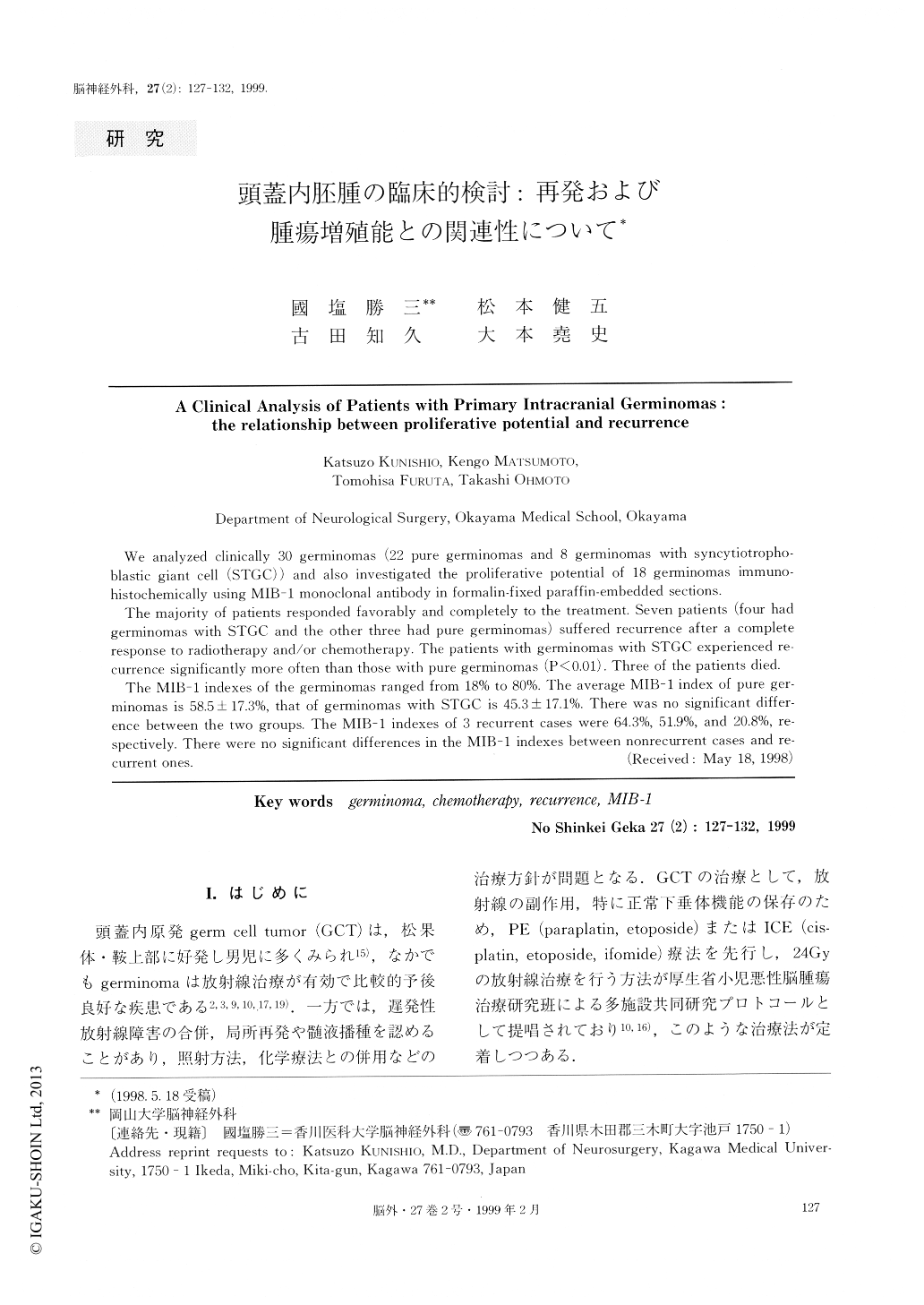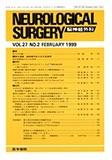Japanese
English
- 有料閲覧
- Abstract 文献概要
- 1ページ目 Look Inside
I.はじめに
頭蓋内原発germ cell tumor(GCT)は,松果体・鞍上部に好発し男児に多くみられ15),なかでもgerminomaは放射線治療が有効で比較的予後良好な疾患である2,3,9,10,17,19).一方では,遅発性放射線障害の合併,局所再発や髄液播種を認めることがあり,照射方法,化学療法との併用などの治療方針が問題となる.GCTの治療として,放射線の副作用,特に正常下垂体機能の保存のため,PE(paraplatin, etoposide)またはICE(cis-platin, etoposide, ifomide)療法を先行し,24Gyの放射線治療を行う方法が厚生省小児悪性脳腫瘍治療研究班による多施設共同研究プロトコールとして提唱されており10-16),このような治療法が定着しつつある.
今回,当科にてこれまで経験したgerminoma30例の臨床所見,治療,再発,予後などに関して検討を行い,今後の治療指針決定のための参考資料とした.さらに,MIB-1モノクローナル抗体7)を用いた免疫組織化学的方法にて腫瘍の増殖能を検索し,再発との関連性について検討を加えた.
We analyzed clinically 30 germinomas (22 pure germinomas and 8 germinomas with syncytiotropho-blastic giant cell (STGC)) and also investigated the proliferative potential of 18 germinomas immuno-histochemically using MIB-1 monoclonal antibody in formalin-fixed paraffin-embedded sections.
The majority of patients responded favorably and completely to the treatment. Seven patients (four hadgerminomas with STGC and the other three had pure germinomas) suffered recurrence after a completeresponse to radiotherapy and/or chemotherapy. The patients with germinomas with STGC experienced re-currence significantly more often than those with pure germinomas (P<0.01). Three of the patients died. The MIB-1 indexes of the germinomas ranged from 18% to 80%. The average MIB-1 index of pure ger-minomas is 58.5±17.3%, that of germinomas with STGC is 45.3±17.1%. There was no significant differ-ence between the two groups. The MIB-1 indexes of 3 recurrent cases were 64.3%, 51.9%, and 20.8%, re-spectively. There were no significant differences in the MIB-1 indexes between nonrecurrent cases and re-current ones.

Copyright © 1999, Igaku-Shoin Ltd. All rights reserved.


